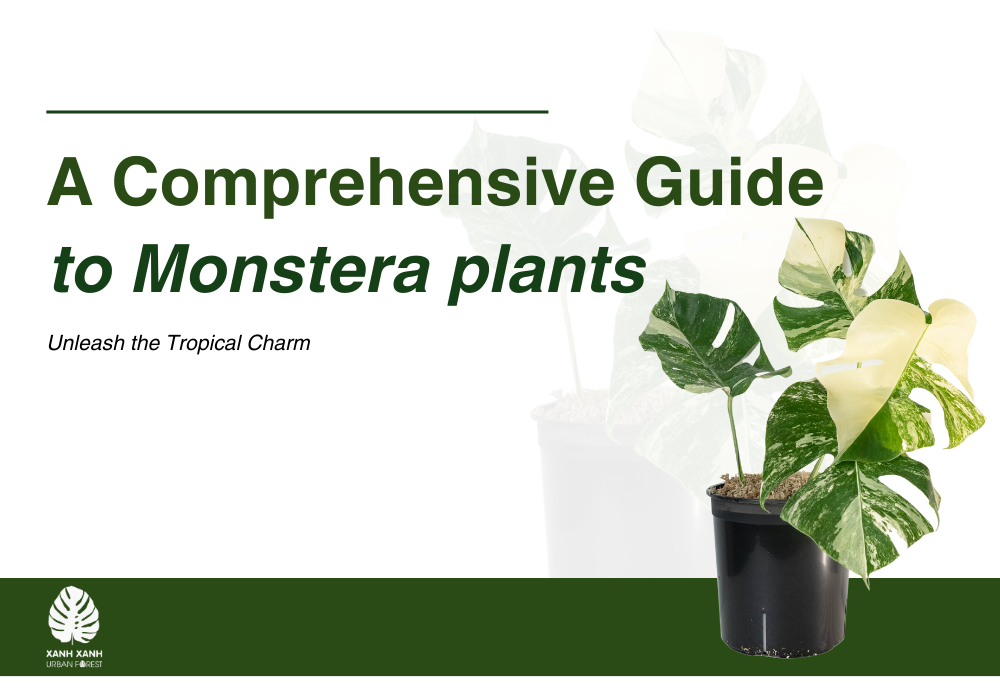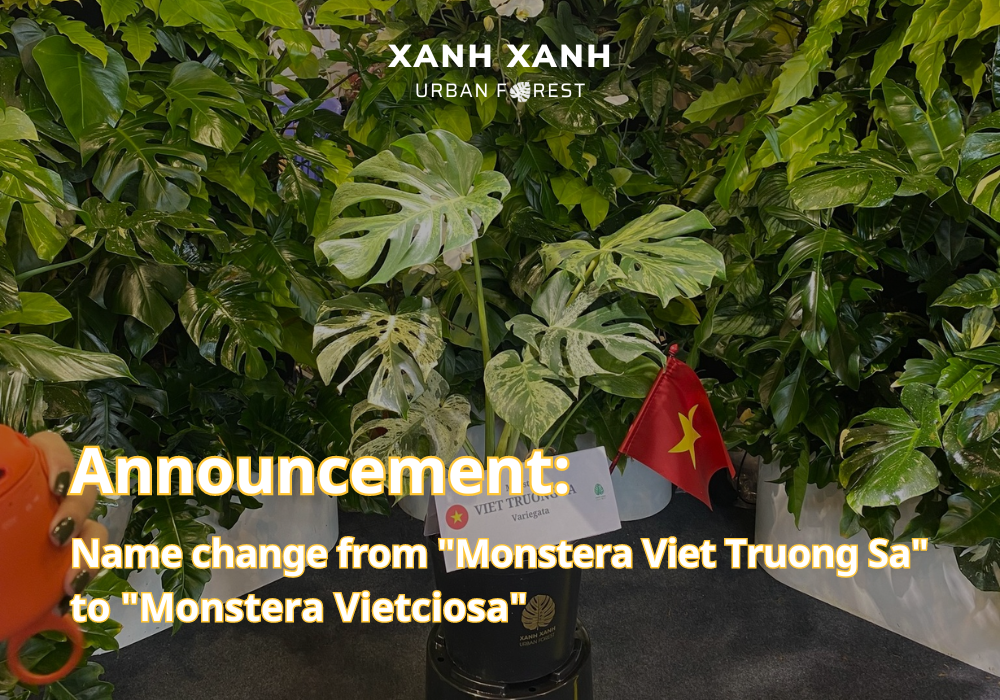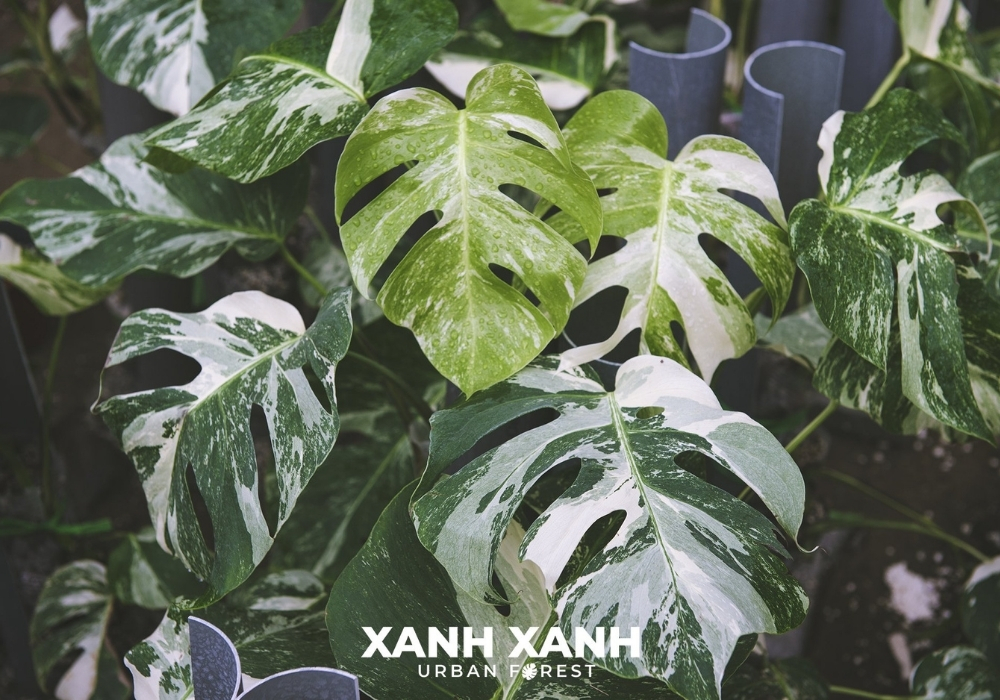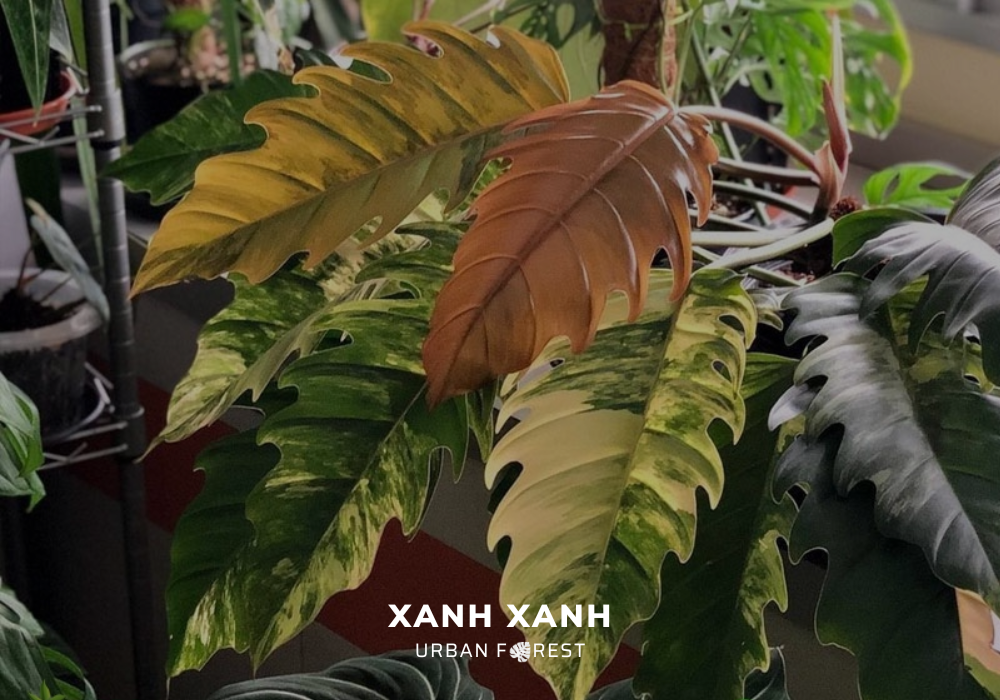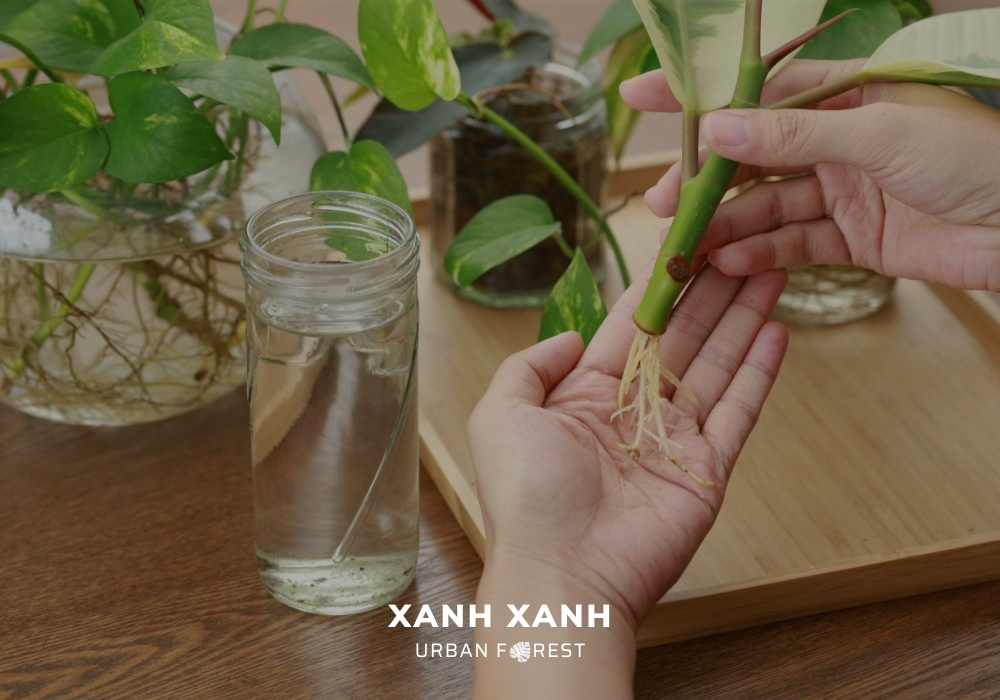Table of Contents
Embark on a journey into the green world of Monstera plants, where lush foliage and eye-catching aesthetics intertwine to create a botanical masterpiece. Monstera plants have captivated indoor gardeners worldwide with their distinctive fenestrated leaves and tropical allure. This comprehensive guide, offered by Xanh Xanh Urban Forest, delves into the fascinating world of Monstera plants, exploring their origins, debunking common myths, and providing a detailed care guide to ensure your leafy companion thrives.
1. What is Monstera plant?
1.1. Plant Profile:
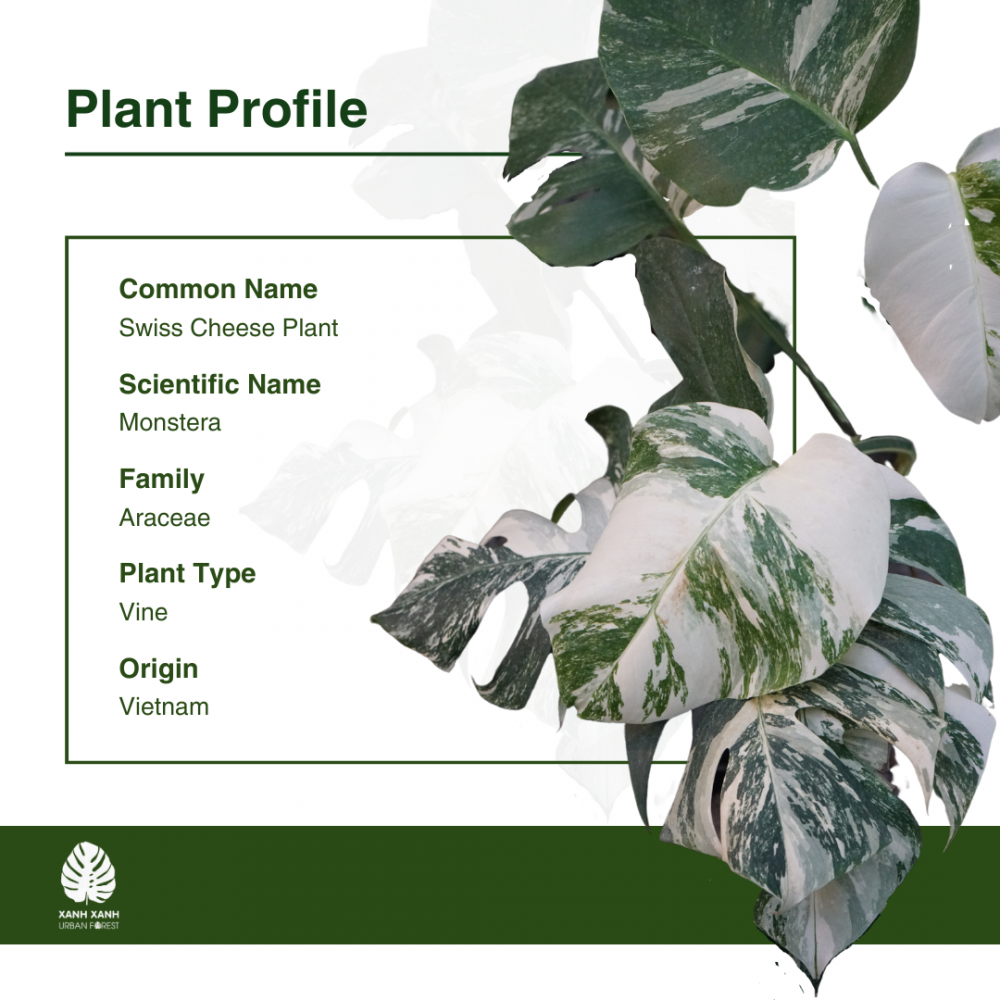
1.2. Myths Debunked
Monstera plants have been shrouded in myths and misconceptions over time. Here, we dispel some of the most common myths:
1.2.1. Monstera plants are poisonous
This is one of the most common myths about Monstera plants. While it is true that the leaves of Monstera plants contain calcium oxalate crystals, which can be irritating to the skin and mouth. Overall, Monstera plants are not poisonous to humans or pets. However, it is always best to err on the side of caution and keep all plants out of reach of children and pets.
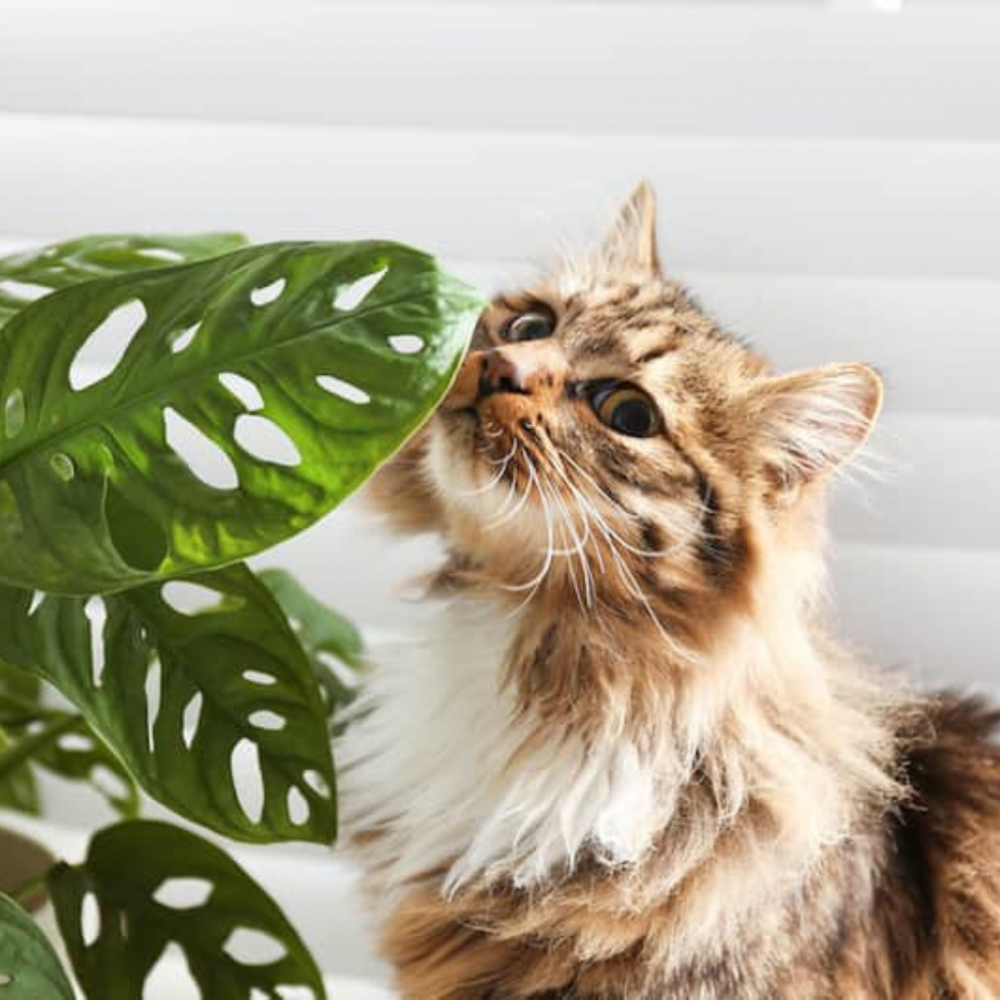
1.2.2. Monstera plants attract pests.
Monstera plants are generally pest-resistant, but they can be susceptible to common houseplant pests like spider mites and mealybugs. Regular inspection and proper care can prevent pest infestations.
1.2.3. Monstera plants will eventually grow into giant trees
This is not entirely true. Monstera plants can grow to be quite large, but they will not grow into giant trees. The largest Monstera plant on record is only about 60 feet tall.
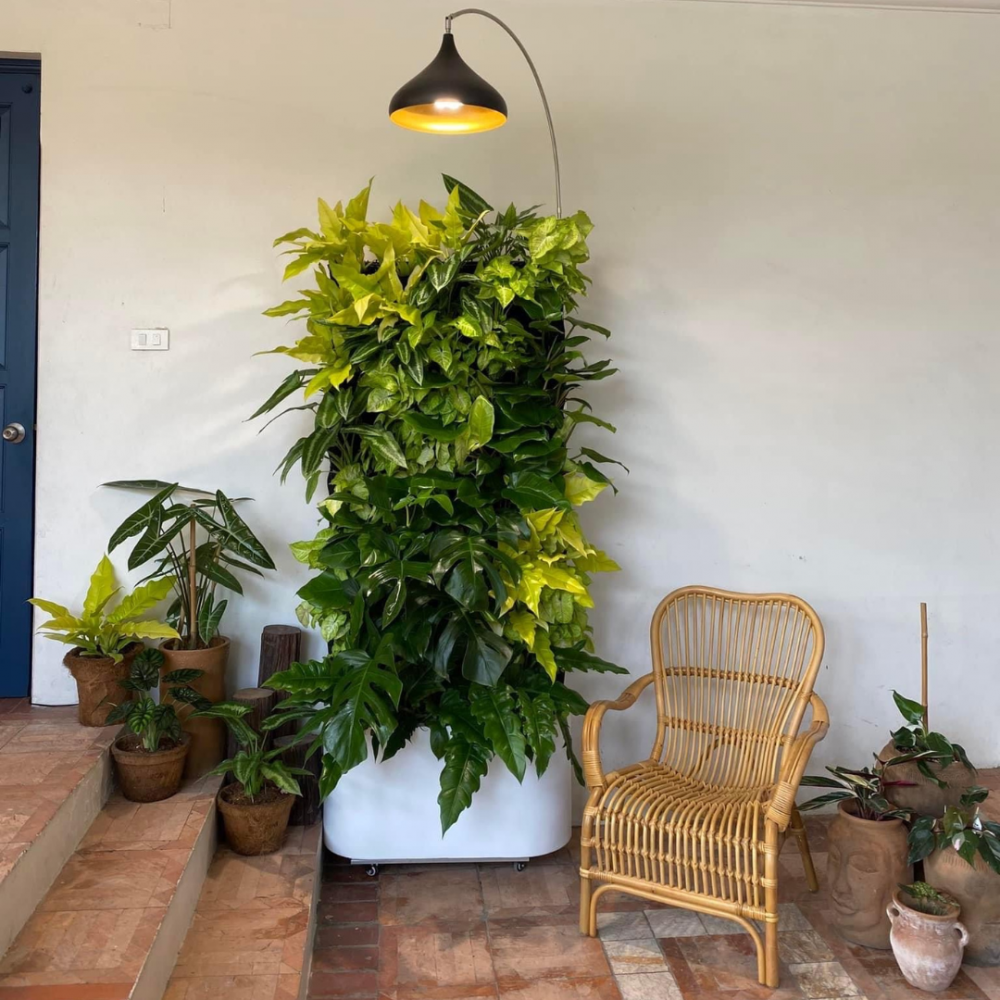
2. Exploring Popular Monstera Varieties
The genus Monstera boasts an impressive array of species, each with its unique charm and characteristics. Here, we highlight some of the most popular Monstera varieties gracing homes and gardens worldwide:
2.1. Monstera Thai Constellation
Add a touch of elegance to your home with the Monstera Thai Constellation, a rare and highly sought-after plant with creamy white variegated leaves. Buy yours now from Xanh Xanh, your trusted source for rare plants.
https://xanhxanhurbanforest.com/product-category/monstera/
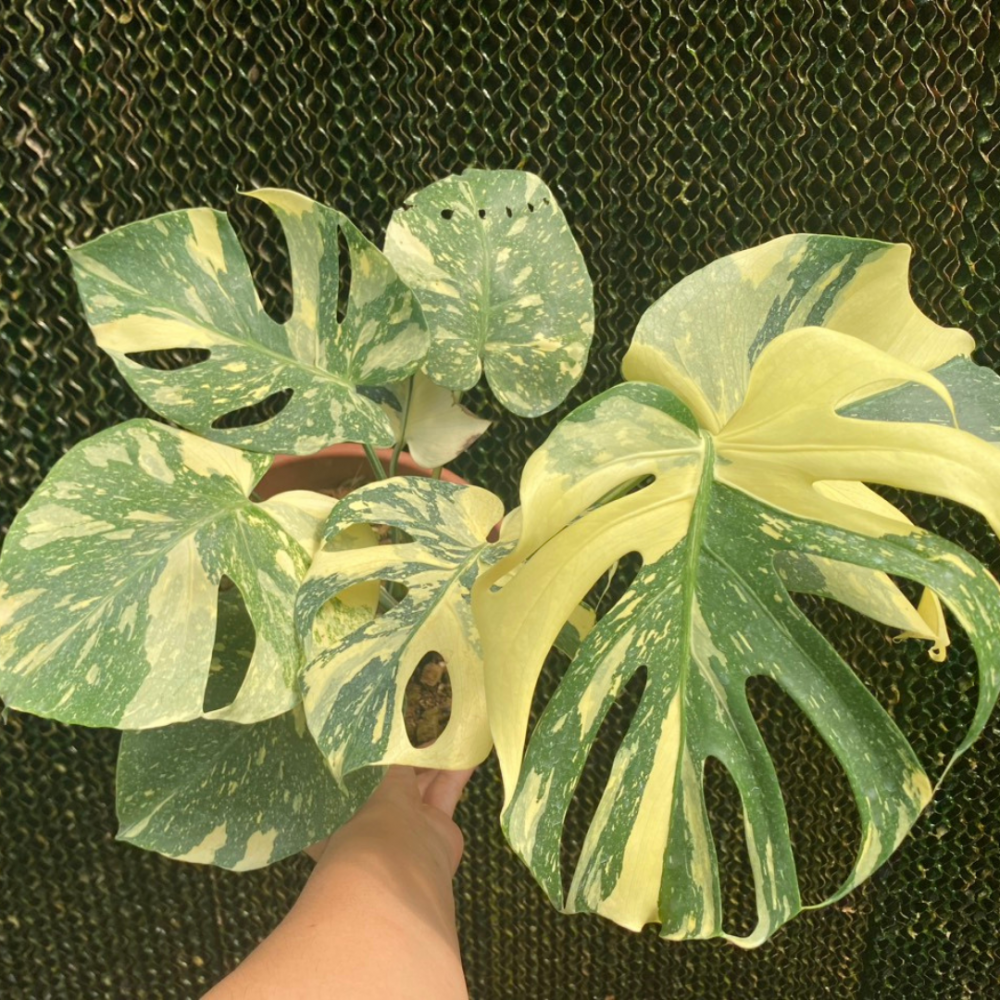
2.2. Monstera Albo Variegata
A prized possession among plant enthusiasts, Monstera Albo Variegata showcases stunning white variegation on its heart-shaped leaves.
https://xanhxanhurbanforest.com/product-category/monstera/
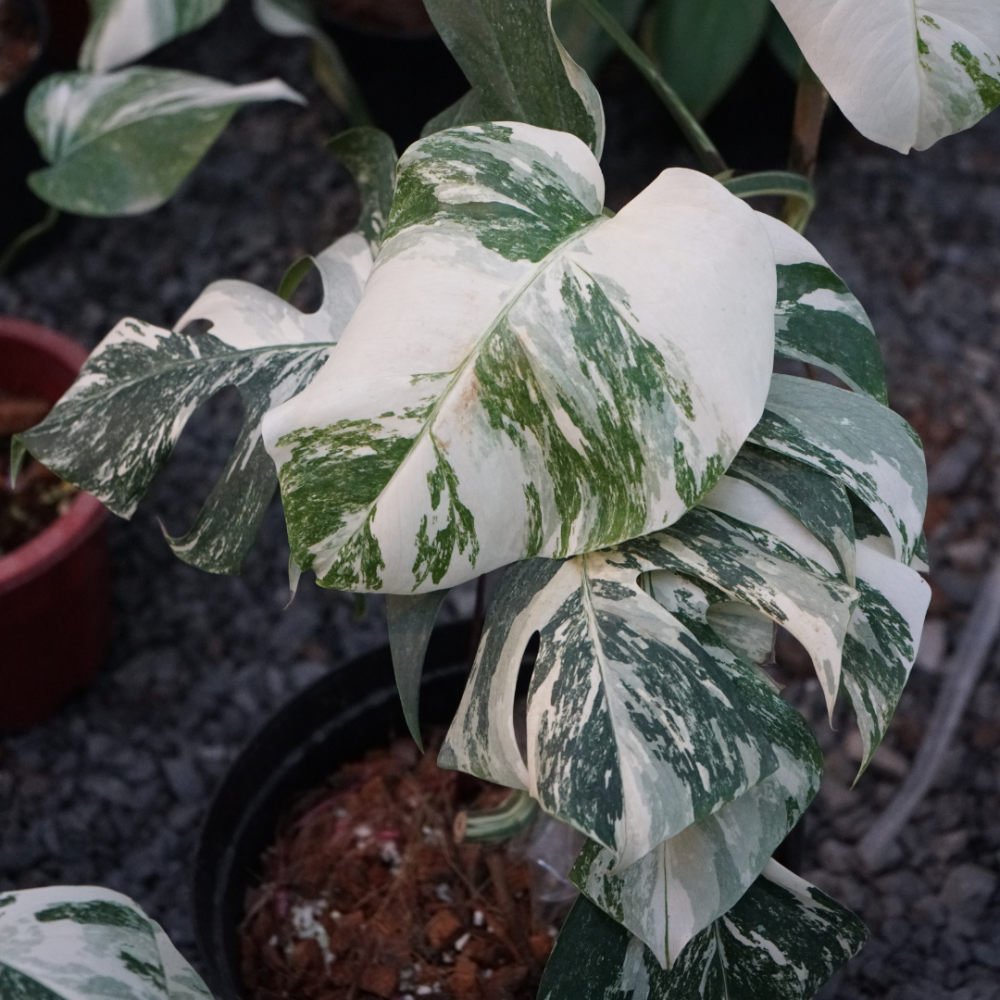
2.3. Monstera Aurea Variegata
Another rare gem, Monstera Aaurea Variegata features striking yellow variegation on its leaves.
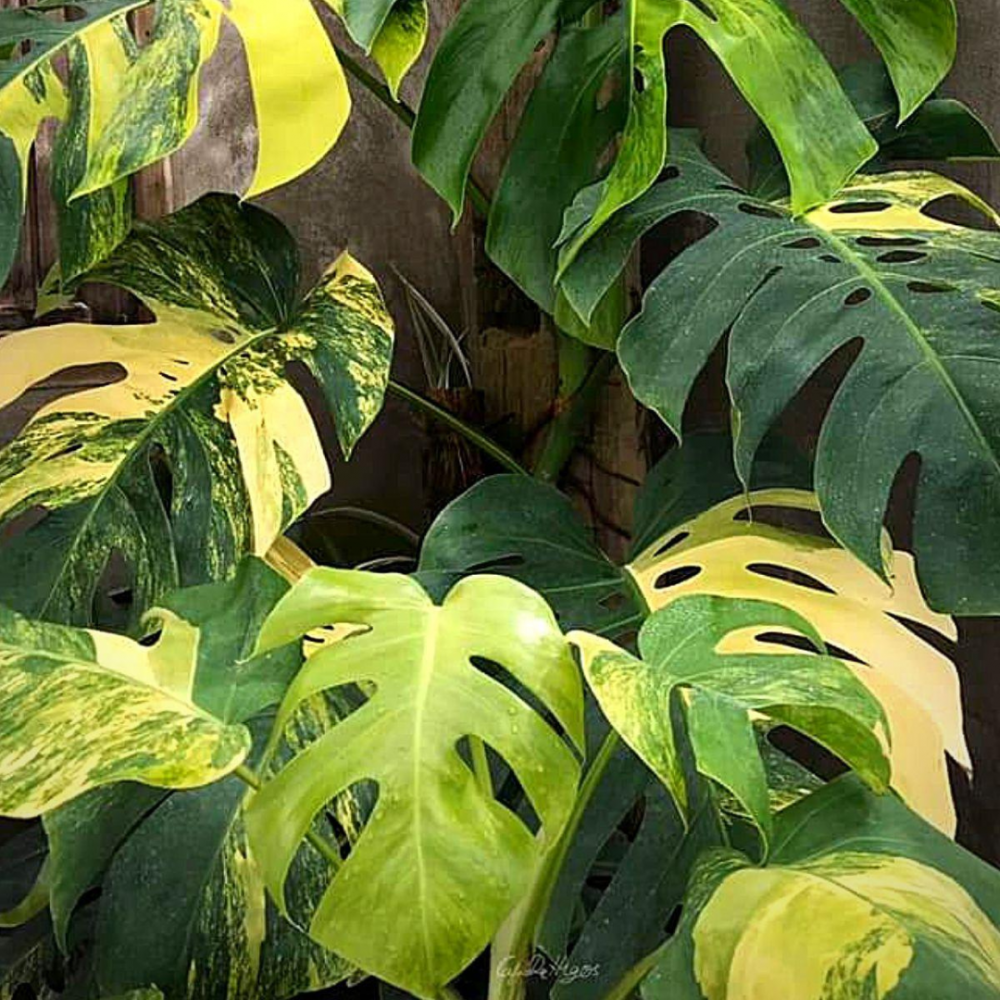
2.4. Monstera Deliciosa
The quintessential Swiss Cheese plant, Monstera Deliciosa is renowned for its large, heart-shaped leaves with distinctive fenestrations.
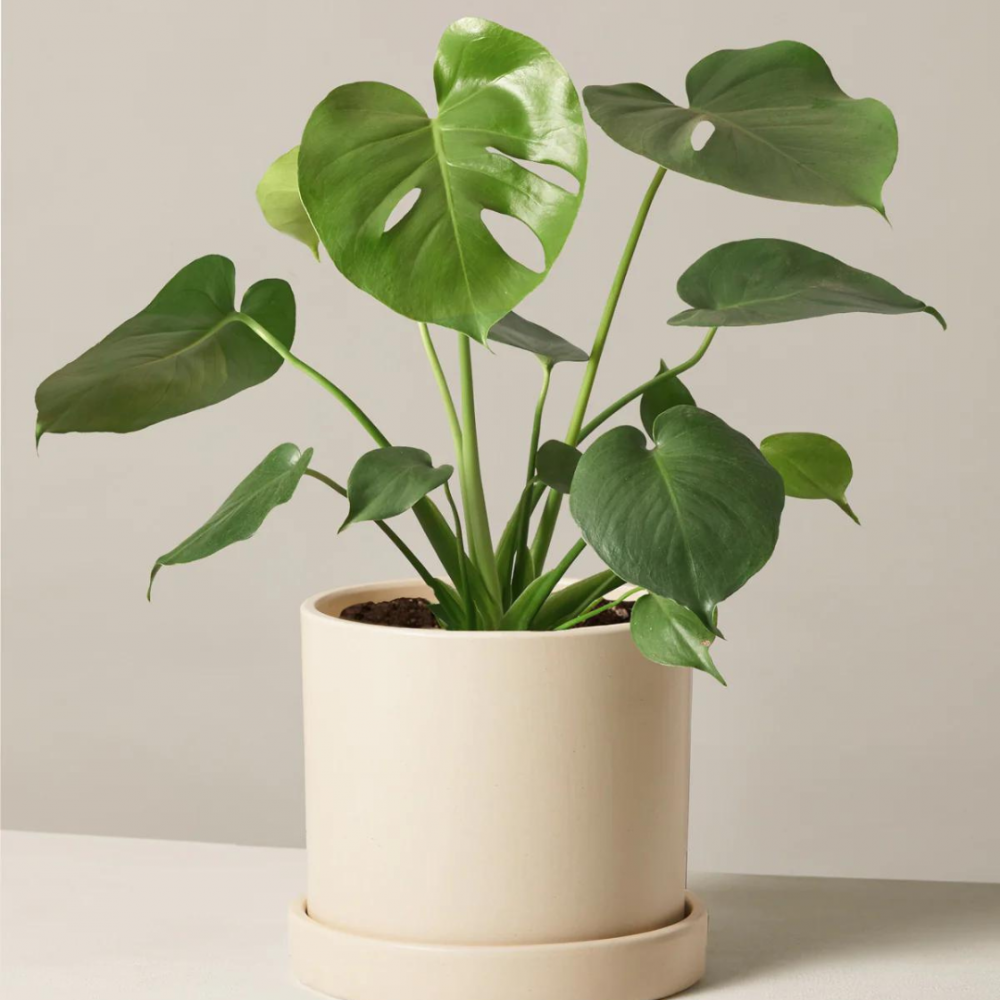
2.5. Monstera Borsigiana
Often mistaken for Monstera Deliciosa, Monstera Borsigiana features smaller, more pointed leaves with fewer fenestrations.
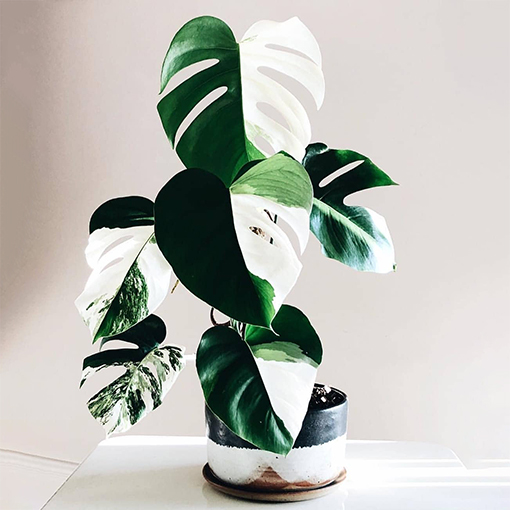
2.6. Monstera Adansonii
Also known as the Swiss Cheese Vine, Monstera Adansonii is a climbing vine with smaller, oblong leaves and abundant fenestrations.
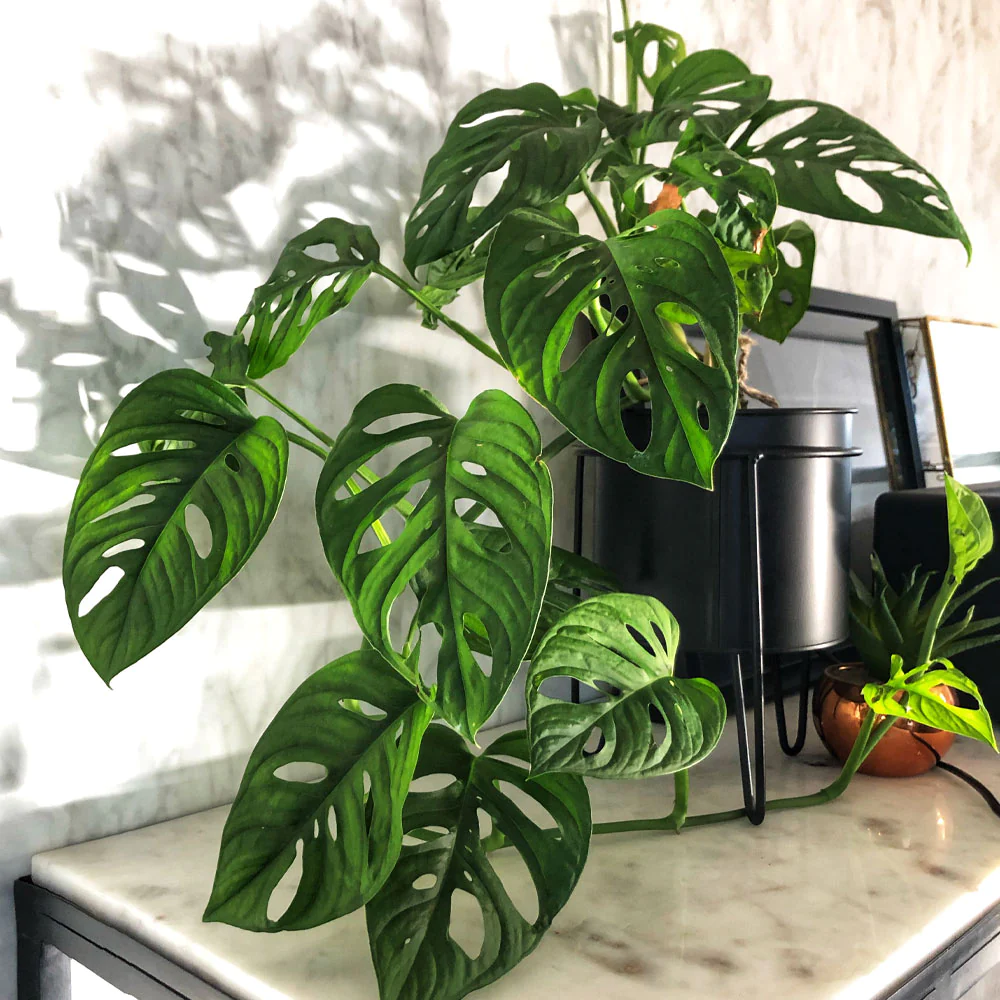
3. Comprehensive Monstera Plants Care Guide
Providing your Monstera plant with the right care ensures it flourishes and brings a touch of tropical elegance to your home.
3.1. Light
For Monstera, which usually has two parts—one green and one yellow—light is quite vital. The green portion of the plant participates in photosynthetic processes because it has chlorophyll, but the yellow half lacks chlorophyll and does not take part in photosynthesis. Thus, in order for the plant to live in low light, it will naturally generate more green portions.
3.2. Soil
Rich in organic materials, a well-draining potting mix is preferred by Monstera plants. With lots of room for the roots to spread out, the soil should be loose and airy. Potting soil, perlite, and peat moss can be mixed in equal amounts to make your own potting mix, or you can use a commercial variety made specifically for tropical plants.
3.3. Watering
Monstera plants should be watered when the top inch of soil is dry. Be sure to water thoroughly until the water runs out of the drainage holes in the pot. Allow the soil to dry out slightly before watering again.
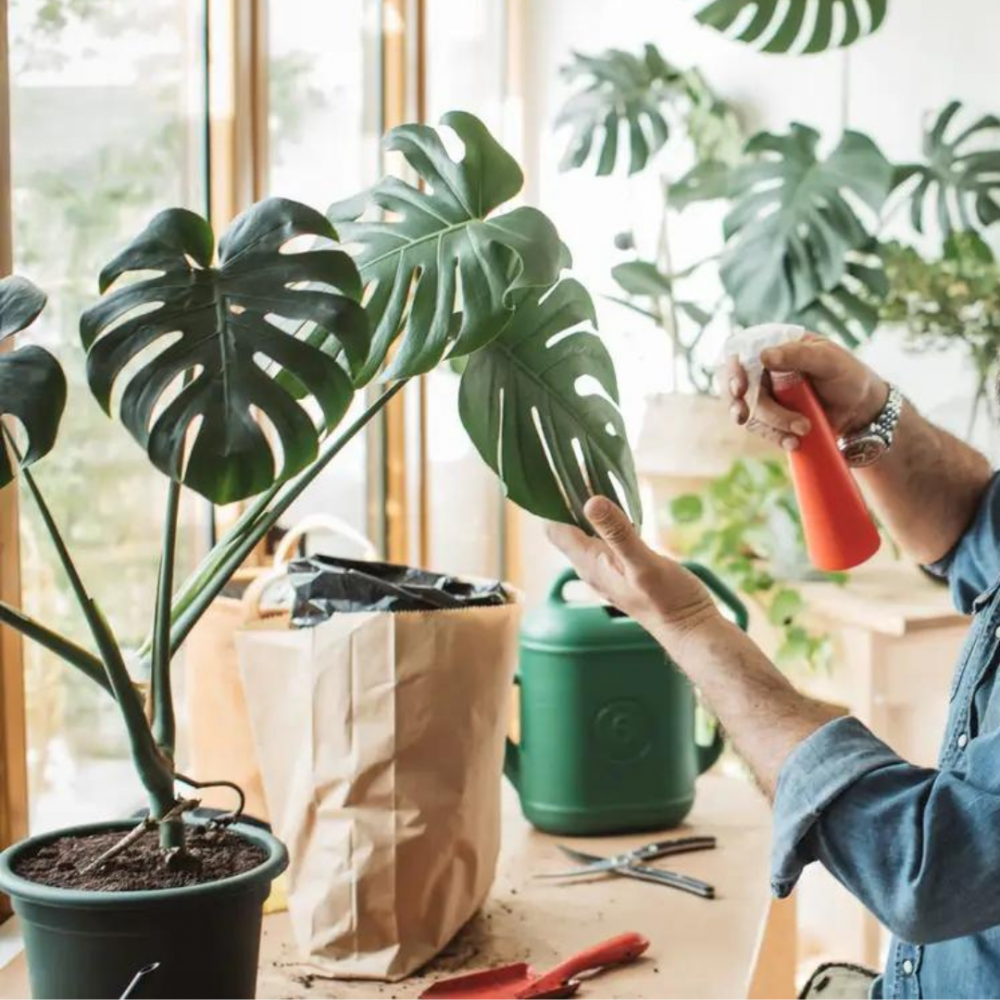
3.4. Temperature
Monstera plants prefer warm temperatures between 65 and 85 degrees Fahrenheit. They can tolerate temperatures as low as 50 degrees Fahrenheit, but they will grow more slowly at cooler temperatures.
3.5. Humidity
The ideal humidity for a healthy plant is 70-80%. You can increase the humidity around your Monstera by grouping it with other plants, such as a Monstera Thai Constellation together with a Monstera Albo Variegata, misting the leaves regularly, or using a humidifier.
4. Troubleshooting Monstera Plant Issues
4.1. Root rot
Root rot is caused by overwatering, which can lead to the Monstera plant wilting and eventually dying. To fix root rot, you will need to cut away any dead or rotting roots. Then, repot the plant in fresh, well-draining soil.
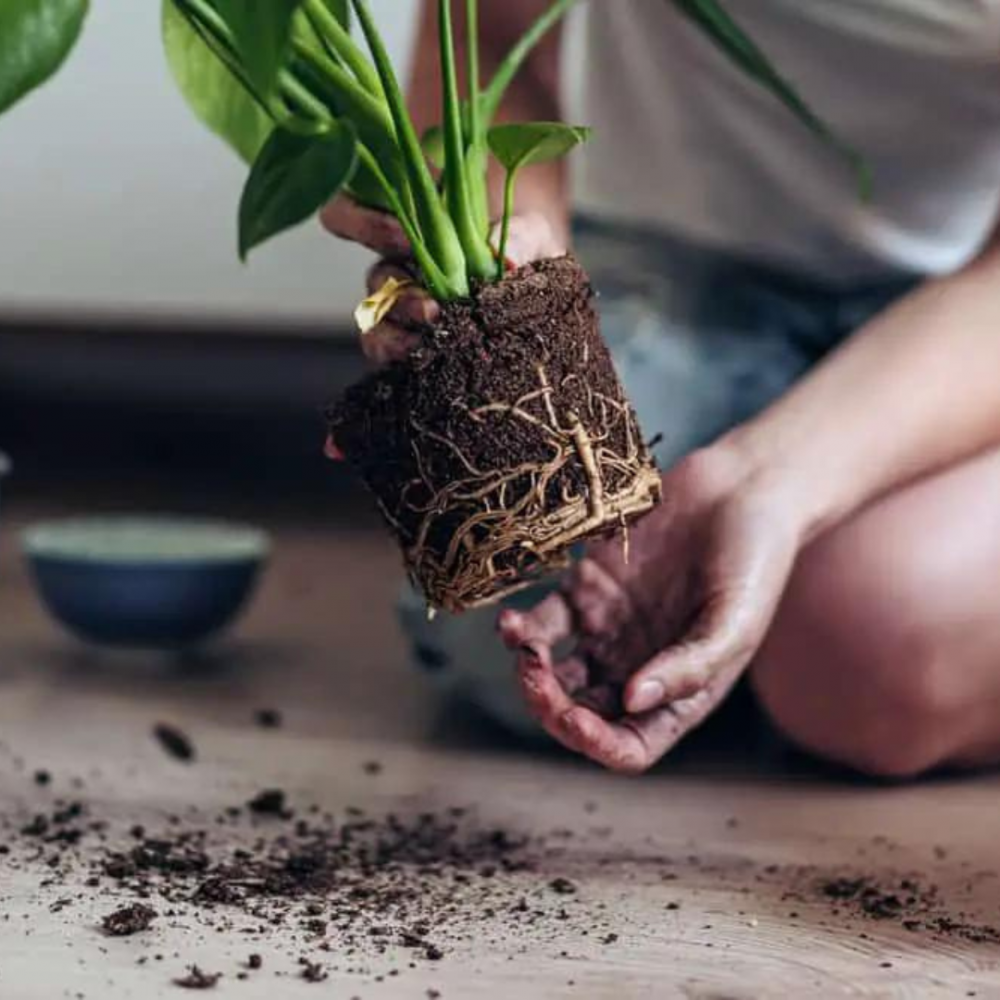
4.2. Leaf rot
A combination of high humidity and overwatering results in leaf rot, causing your Monstera to be more vulnerable to fungal infections. Water your Monstera only when the soil is completely dry and stay away from planting plants in highly humid places.
4.3. Leaf burn
Direct sunlight, high temperatures, and low humidity are some of the variables behind leaf burn. Plant your plants where they will receive indirect sunlight to avoid leaf burn. Additionally, you should keep your Monstera away from places with high temperatures or low humidity.
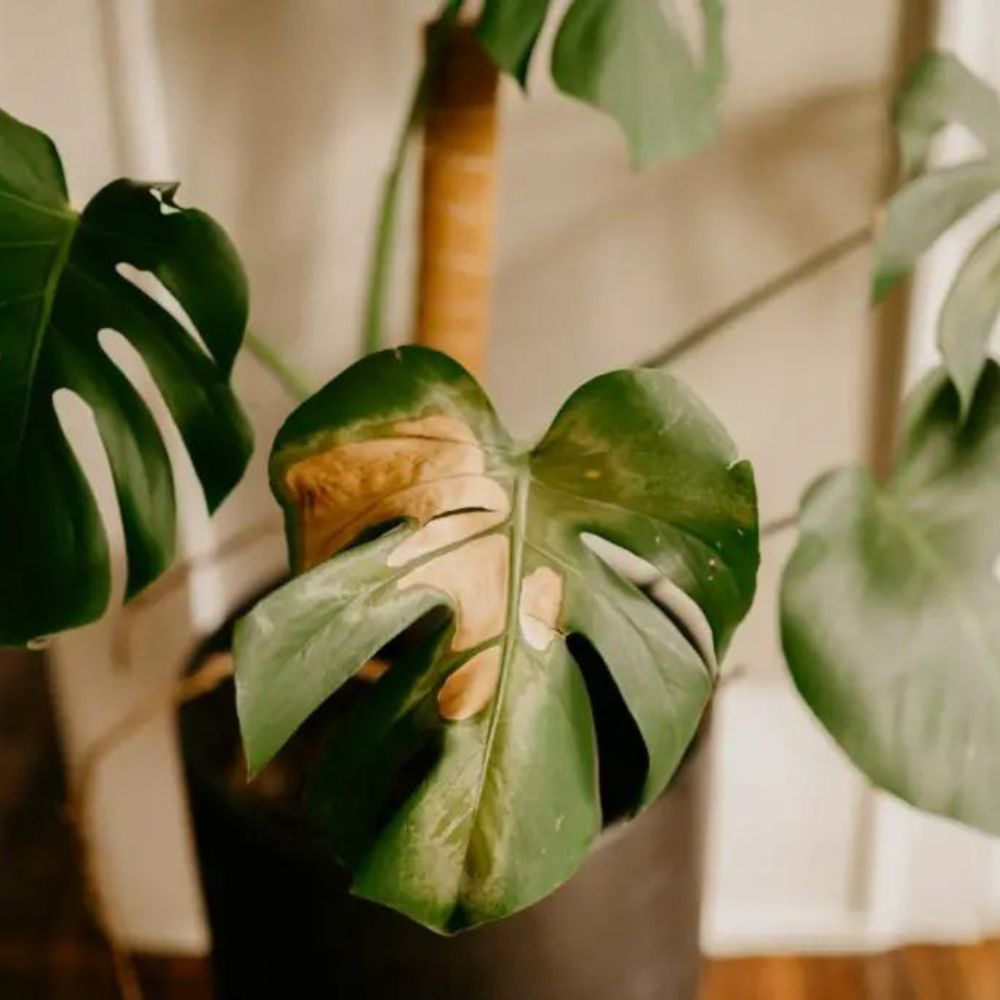
4.4. Yellow leaves
There are several reasons why leaves turn yellow, such as pests, nutrient deficiencies, overwatering, and underwatering. Finding the source of the issue is crucial if the leaves on your plant are turning yellow. After determining the problem, you can take appropriate steps to address the issue and promote the plant’s recovery. This could involve treating pests, adjusting watering practices, or addressing nutrient deficiencies.
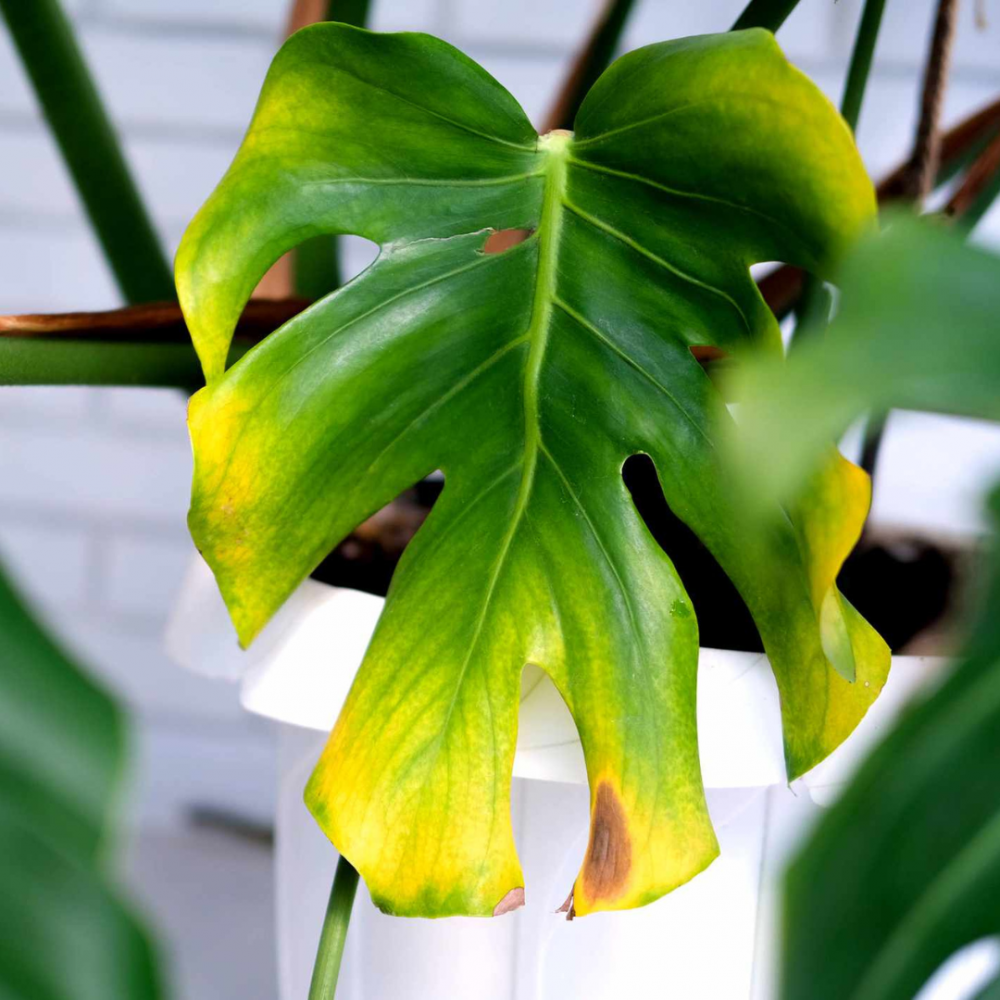
4.5. The fungus rust
Brown or orange coloration on leaves is a symptom of the fungus rust. Spores can travel great distances by air or water, dispersing rust. Applying a fungicide to your plants can help prevent rust.
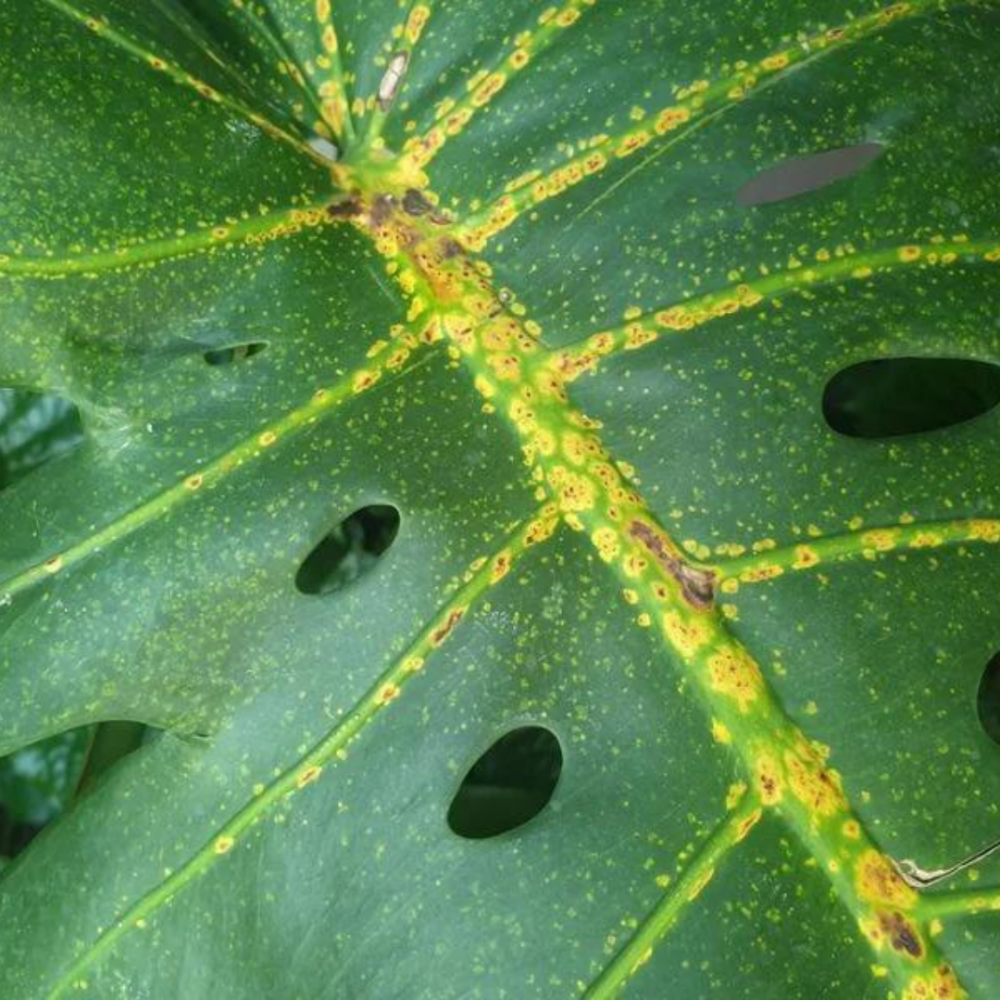
5. Where to Find Your Monstera Gems?
In recent times, Monstera plants have gained popularity due to their distinctive foliage and low maintenance needs. Finding the ideal Monstera plant for your house or place of business is made simple by the large selection of plants available from numerous internet merchants. Here are a few reputable online retailers to consider:
5.1. Xanh Xanh Urban Forest: Your Premier Rare Plant Online Store
Xanh Xanh Urban Forest is Asian leading online supplier of rare and high-quality plants, including Monstera. Xanh Xanh also offers expert guidance, detailed product descriptions, care instructions, and personalized recommendations to help customers find the perfect plant for their needs. Xanh Xanh Urban Forest is a reliable and convenient source for Monstera plants of all types.
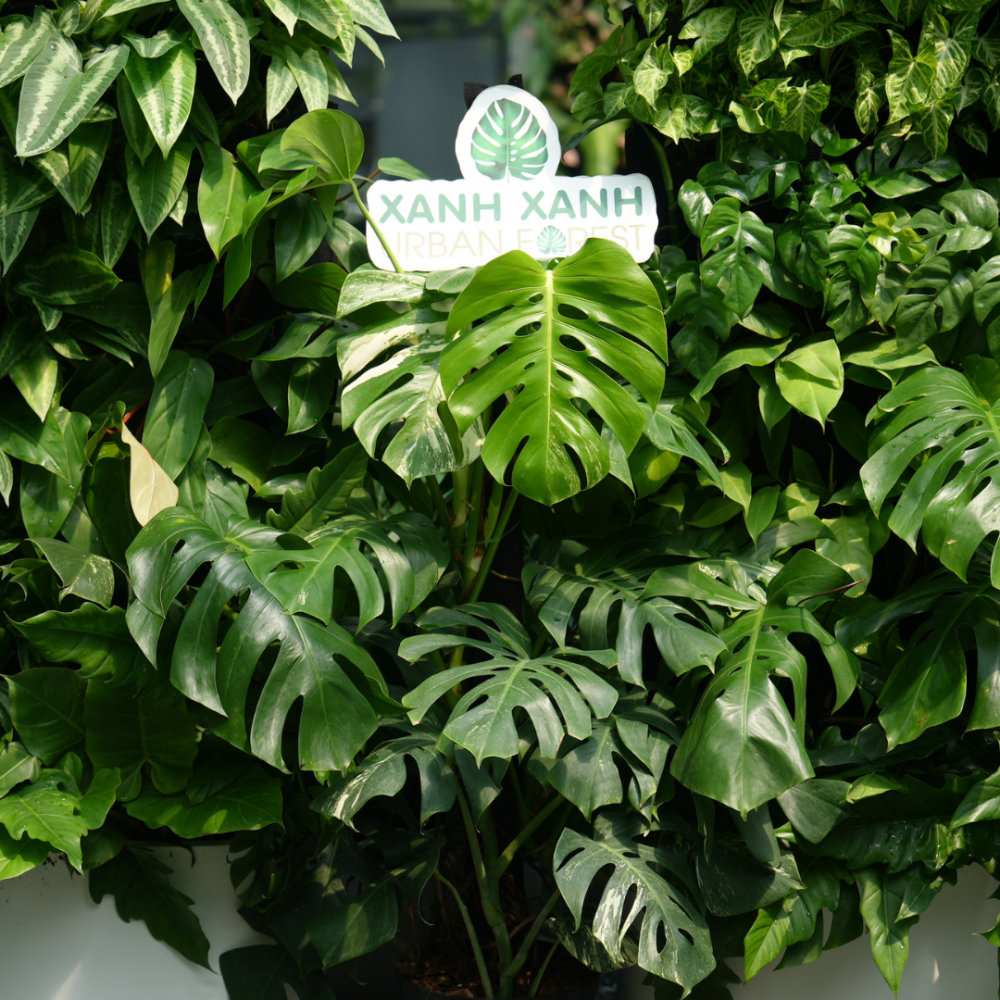
5.2. Etsy
Etsy is a marketplace where independent sellers offer a wide variety of goods, including variegated varieties or plants with unusual leaf shapes. Etsy sellers also offer a variety of pot sizes and styles, so you can find the perfect combination to complement your home decor. When shopping for Monstera plants on Etsy, be sure to read reviews carefully and choose sellers with a good reputation.
5.3. Amazon
Monstera plants are available on Amazon in a large assortment of sizes and pricing ranges. Thanks to that, it’s a fantastic choice for customers on a tight budget or those seeking a particular kind or size of plant. But it’s crucial to remember that Monstera plants on Amazon might range in quality, so before you buy, make sure you carefully read the reviews.
5.4. The Sill
The Sill is a popular online retailer that offers a curated collection of houseplants, including Monstera. Their plants are all carefully selected for their quality and beauty, and they offer a variety of helpful resources, such as expert care guides and plant accessories. The Sill is a good option for shoppers who are looking for high-quality Monstera plants and expert guidance on how to care for them.
6. Frequently Asked Questions (FAQs)
6.1. Why won’t my Monstera leaves split?
The fact that your Monstera leaves aren’t splitting is most likely due to the fact that the plant is still young. If you acquired a newborn Monstera plant from the nursery without holes in the leaves, expect to wait roughly two years to witness the split.
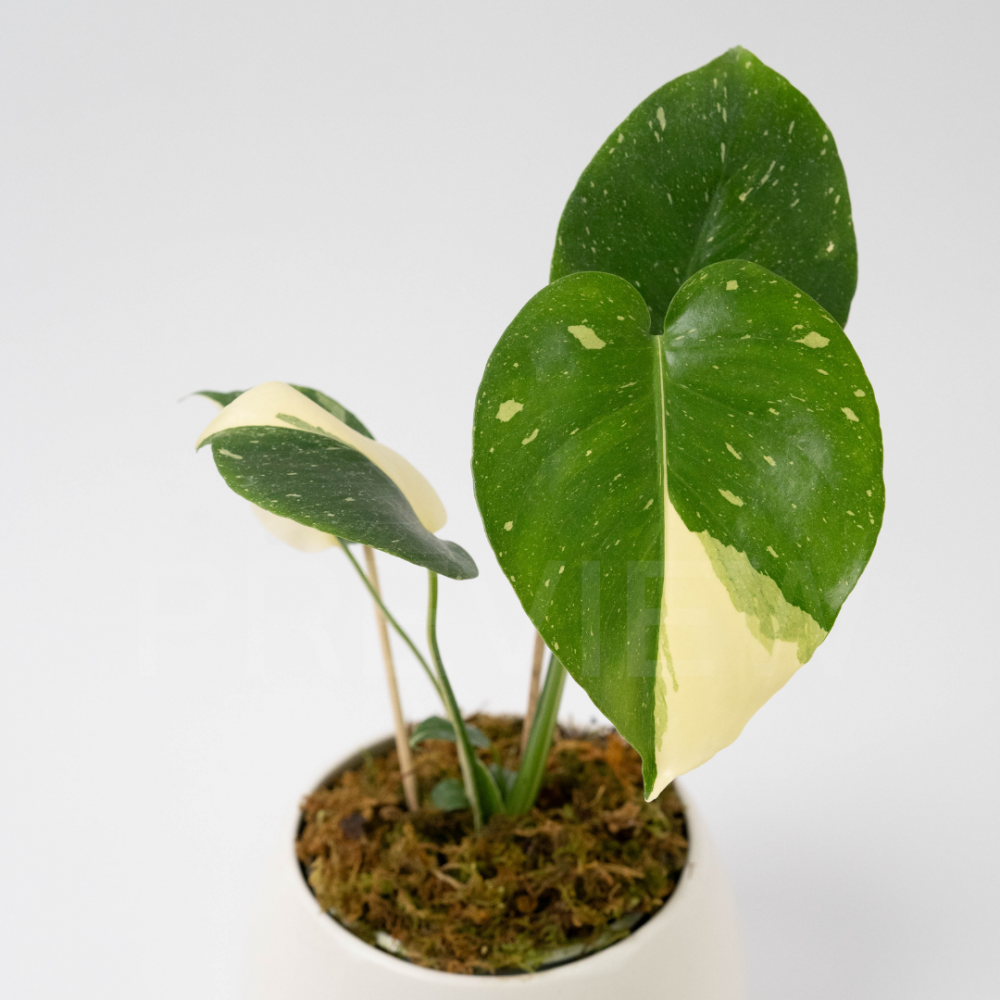
Before the benefits of a split leaf become necessary, the leaves must grow to a width greater than that of a normal plant leaf (typically about 5 or 6 inches for the largest, unsplit leaves).
However, it’s also possible that the growing conditions are not ideal, such as low light or improper watering.
6.2. How often does a Monstera grow new leaves?
Every four to six weeks, a young Monstera will produce new leaves. However, as the plant grows older, it will produce more new leaves.
It’s critical that you provide your plant with the best possible growing circumstances. Before your leaf unfurls, the fenestrations will take place.
6.3. What is the best way to prune my Monstera?
Pruning a Monstera isn’t difficult; they don’t need to be meticulously pruned.
Monsteras are notorious for their enormous size! Indoors, they can reach a height of 10 feet, which is higher than the usual ceiling height.
You can start by pruning it to make it smaller. Also, you can divide your plant into two or more plants if it is growing too horizontally.
6.4. Why is my Monstera plant falling over?
There are a few reasons why a Monstera plant might fall over. One possibility is that the plant is simply top-heavy. Monstera plants can grow quite large, and their leaves can be heavy. If the plant does not have enough support, it may fall over.
Another possibility is that the plant is not receiving enough light. Your plant need bright indirect light to thrive. If the plant is not receiving enough light, it may become weak and fall over.
Finally, it is also possible that the plant is overwatered. If the roots of the plant are sitting in water, they can rot and the plant will become unstable.
7. Final Thoughts
Monstera plants have captured hearts and homes worldwide with their captivating foliage and tropical allure. By providing them with the proper care and attention, you can transform your living space into a lush oasis, adding a touch of nature’s artistry to your everyday life. Remember, with patience, dedication, and a sprinkle of plant love, your Monstera plant will thrive, bringing you years of verdant beauty and tropical charm.
Xanh Xanh Urban Forest hopes this blog post has been informative and helpful. If you have any questions, contact us via:

